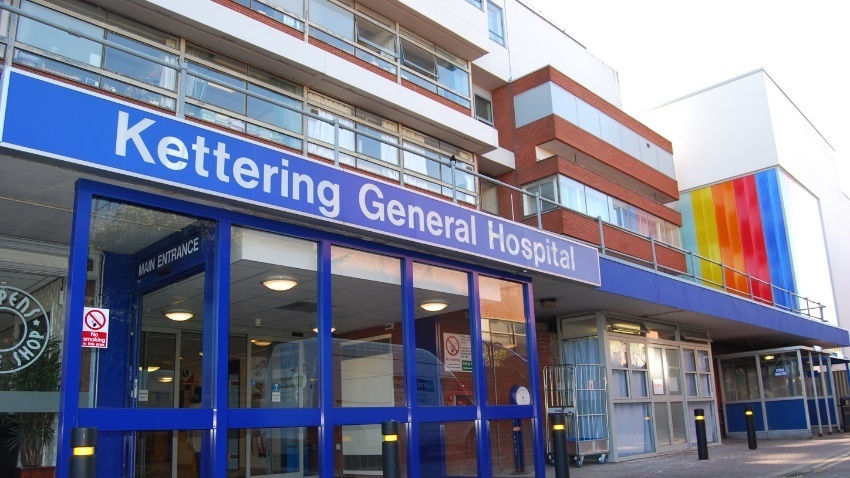
Data has played a life-saving role in how governments, businesses and individuals have responded to the pandemic. But simplicity of the charts tracking the pandemic belies a great deal of hard work on the ground. In England, hospitals have been required to provide daily updates on patients and resources, placing new pressure on their data management practices at a time of extreme crisis.
At Kettering General Hospital NHS Foundation Trust (KGH), the swift deployment of robotic process automation (RPA) at the peak of the Covid-19 pandemic helped meet this requirement with a minimum of human involvement, allowing clinical staff to focus on patients instead. Ian Roddis, digital director at KGH, spoke to Tech Monitor about how RPA has helped the trust provide Covid-19 situation reports and the additional benefits that have followed.

Automating daily Covid-19 reports with RPA
Since the beginning of the pandemic, hospitals in England have been required to submit Covid-19 situation reports every day at 11am. These reports include granular data points including bed occupancy, number of Covid-19 cases, demand for oxygen and ventilators, and staffing levels. “There was a complex data need,” recalls Roddis. “It was obviously a unique demand because of Covid, and it was over and above everything else.”
As the impact of Covid-19 became more severe, the demand for oxygen and ventilators increased dramatically. But not every hospital had the same provision, so knowing where the greatest demand was became literally a matter of life and death. “You’ve only got a limited number of beds so it’s really important understanding what’s the demand on your hospital, what’s the flow and how quickly you discharge people as appropriate,” explains Roddis. Tracking patient flow was also essential to understand demand for NHS resources at a national level and to inform the government’s pandemic strategy.
It was around this time that Roddis received a call from technology consultancy Foundry4, who had been commissioned by NHSx, the agency charged with developing digital best practice for the health service, to identify uses cases for automation in hospitals. Foundry4 asked Roddis if KGH would be interested in exploring RPA applications. Keen to grasp any opportunity to innovate in the hospital even during the pandemic, his answer was immediate: “We fools that we are said ‘yes, of course!'”
Roddis’s team identified the daily Covid-19 situation reporting (sit rep) as a process that could benefit from RPA. “It [has] lots of data sources, [it’s] very repetitive, needed to be done every day and arguably could be replicated in lots of other trusts – so build it once, share freely or pinch with pride, as some people might say,” Roddis says. Data included in the sit reps come from three main areas, namely HR (to report on staff absence, Covid-19 and non-Covid-19 related), the incident room and data from patient administration systems.
The trust’s leadership did not hesitate to support Roddis’ adoption of RPA, given the severity of demand and the fact that, if successful, the application could be replicated by other trusts during the Covid-19 pandemic. “We have some enlightened leadership here,” adds Roddis. “We have a strong digital ambition (we just published our group digital strategy) and we want to be the most digital-enabled group by 2023, so I’m going to say our leadership got digital and then the way I sold it in was such an easy task, to be honest.”
Innovating amid the Covid-19 crisis
As far as Roddis is aware, KGH was the first trust to apply RPA to Covid-19 reporting – but that is not the only area in which they deployed the technology. Indeed, digital innovation in non-Covid-related areas has not stopped during the pandemic, he explains. “We have a strong digital ambition and we tried to keep doing stuff, whether that’s electronic patient records or rollout of new applications and so on,” Roddis says. “We were open to opportunities and we like to have a mindset that says when there’s a new problem, we think about new ways of doing it.”
A persistent problem in UK hospitals is the sheer number of administrative tasks that take up much of the staff’s time, such as finance procedures or onboarding new workers. Much of this is still paper-based, Roddis explains.
To help with this admin burden, Roddis and his team built Mary Bot, an RPA-powered virtual assistant named after the hospital’s head of ICT, Mary Macleod. Mary Bot has its own email address and can schedule meetings or log into the HR system. It also emails the completed sit rep template to the Health Intelligence team for checking and submitting to NHS England at 11am each day, which is then added to the national Covid-19 data collection.
While some staff were initially fearful that automation might endanger their jobs, they were reassured once they saw how Mary Bot allowed them to focus on more complex and important tasks. “The admin teams very much started to see the robot as an extra member of the team, as it were,” says Roddis.
Indeed, fostering a ‘can do’ attitude was essential to achieving user acceptance and adoption of Mary Bot and other automated tools, he explains. Although the level of digital skills among the trust’s staff ranges from “really low to really high”, Roddis explains, the positive attitude with which these innovations have been received is phenomenal, he says.
Patient value from RPA during Covid-19 crisis
Cost-reduction is a driver for many automation applications, but for Roddis the primary focus has been improving care and reducing risks. “There’s a whole industry around cost savings: automate stuff because robots work 24/7, you don’t need to feed them, you don’t need to pay them,” he says. “That’s not really what we are in it for.” Although the trust measures time and salary equivalent saved to gauge the success of automation projects, “this is about giving time back to support patients,” he adds.
There’s a whole industry around cost savings: automate stuff because robots work 24/7, you don’t need to feed them, you don’t need to pay them. That’s not really what we are in it for.
Roddis and his team are now studying how automation can be applied to clinical coding, a complex system in which information in patients’ case notes is codified. This helps clinicians and relevant stakeholders to understand a hospital, its services and treatments, and it is also important to improve quality. And they are working with nearby Northampton General Hospital on automating more processes, from back-office functions such as recruiting and onboarding new staff, to patient-facing services such as appointment bookings.
“What we are looking to do is create almost like a hopper: what are the opportunities around the hospital and having a way of evaluating what gives the most value. And obviously at the top of that will be benefits to patients and what frees up the most time for staff to be able to give back to patient care.”






